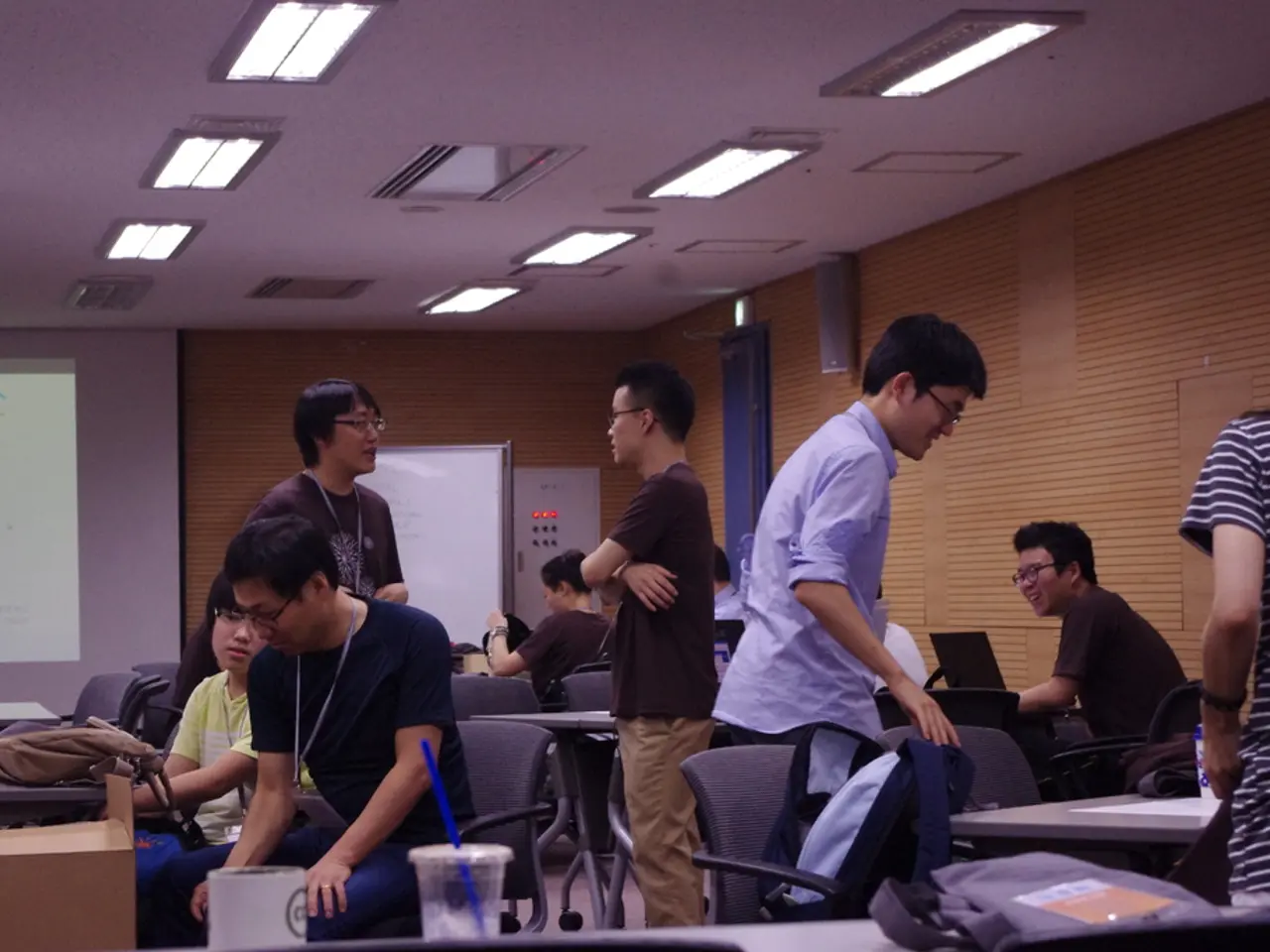Boosting Inspiration and Participation for Academic Achievement
Boosting Motivation and Engagement in Learning Environments: A Multifaceted Approach
In the modern educational landscape, researchers and educators are focusing on strategies that combine technology, teacher expectations, and emotional intelligence to enhance motivation and engagement in learning environments.
The Role of Technology
Integrating advanced technologies, such as artificial intelligence (AI) and microlearning via mobile platforms, is a significant trend. AI enables personalized, student-centered learning experiences by adapting to individual needs, facilitating active participation, experimentation, and exploration in the classroom. Teachers with high self-efficacy in using AI are more capable of motivating students and customizing learning activities, especially in complex subjects like physics. Microlearning, which delivers short, focused content through diverse media, helps hold learner attention and supports retention by spacing sessions over time.
Teacher Expectations and Qualities
Teachers who consistently set high expectations and communicate belief in all students’ potential significantly improve motivation and academic outcomes. Classrooms with high-expectation cultures can achieve up to two years’ academic progress compared to lower-expectation settings. Qualities such as patience, empathy, creativity, resilience, and cultural responsiveness foster supportive environments that help students feel connected and capable. For example, culturally responsive teaching improves students’ sense of belonging and social-emotional skills by validating diverse identities and experiences.
Emotional Intelligence and Social-Emotional Learning (SEL)
Emotional intelligence development through SEL is increasingly integrated into modern education. SEL focuses on skills like empathy, self-awareness, collaboration, and communication, supporting students in managing challenges and building trustful relationships with teachers and peers. Such emotional competencies enhance motivation by creating a positive, supportive classroom atmosphere. Building resilience, grit, and fostering a growth mindset encourage perseverance and intrinsic motivation, enabling students to see challenges as opportunities for growth rather than obstacles.
Pedagogical Strategies
Creating supportive, inclusive learning environments and encouraging autonomy and self-directed learning are crucial. Autonomy enhances intrinsic motivation by giving students control over their learning paths. Collaborative learning and connecting lessons to students’ personal interests promote engagement and relevance. Teacher-student relationships characterized by warmth and high yet achievable expectations further boost motivation and engagement.
In summary, current research highlights a multifaceted approach where effective use of technology, high teacher expectations combined with emotional intelligence skills, and supportive pedagogical practices synergistically enhance student motivation and engagement in learning environments. Digital tools for enhanced learning offer tailored content, allowing students to progress at their own pace. Measuring motivation and engagement in learning is integral to understanding students' experiences and enhancing educational outcomes. Virtual classrooms enable real-time interactions among peers and educators, promoting collaboration and enhancing engagement. A supportive environment that fosters positive relationships can significantly enhance students' enthusiasm towards learning.
The future of motivation and engagement research lies in embracing a holistic view that considers various factors influencing students' learning experiences. Adopting innovative methods and interdisciplinary collaborations will be pivotal in advancing our understanding of motivation and engagement in learning. Research into motivation and engagement in learning is increasingly focusing on the integration of technology and personalized learning experiences. The role of emotional intelligence in learning environments is being examined, with research suggesting that fostering emotional awareness may enhance both intrinsic and extrinsic motivation. However, social media can also present challenges, such as distractions from non-educational content. Balancing engagement with effective use of social media is vital in promoting motivation among learners. Community resources further contribute to the environmental landscape of learning, providing opportunities for engagement beyond the classroom. Classroom layout and resources play a pivotal role in student engagement, with bright, well-organized spaces equipped with learning tools encouraging active participation. Interdisciplinary approaches are becoming essential, combining insights from psychology, neuroscience, and education to identify new strategies to enhance student learning and retention. Applications like Kahoot! and Quizlet provide gamified assessment opportunities, making learning more enjoyable. Collaborative projects, discussion forums, and virtual study groups are examples of engagement through social media.
In the realm of e-learning and education-and-self-development, personal growth can be stimulated by incorporating artificial intelligence (AI) into the learning process. AI, through its adaptive nature, facilitates active participation, experimentation, and exploration, thereby fostering personal-growth in students.
Furthermore, emotional intelligence and social-emotional learning (SEL) are crucial elements in the modern educational landscape, as they support students in managing challenges and building trustful relationships. This, in turn, enhances motivation by creating a positive, supportive classroom atmosphere.




